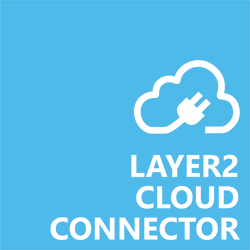Connect SQL Server and SharePoint and 150+ other systems in minutes.
Data Integration and Synchronization for SQL SERVER and Sharepoint Or 150+ other systems
How to connect Microsoft SQL Server with SharePoint
This "how-to-connect" documentation explains the initial configuration of an example connection from Microsoft Server to a SharePoint Online List in Office 365. We will be synchronizing data stored in a SQL Table.
Configuring Microsoft SQL Server
You can make use of any connection strings for SQL Server as usual, e.g.:
Data Source=myServer; User Id=myUser; Password=myPassword.
You will find more information about the connection string here SQL Server connection strings.
In case of integrated authentication (trusted connection) please make sure that the Layer2 Cloud Connector Backend Service(on Windows Services) has appropriate database access rights. It is recommended to use basic authentication with a specific SQL User.
You can make use of all SQL queries your data provider supports. You can also use stored procedures to return records, exec myStoredProcedure().
You can make use of aliases in the query to force auto-mapping in Layer2 the Cloud Connector, e.g. select
The primary key is normally set automatically.
Configuring the Layer2 Cloud Connector
Creating a new connection
Create a new connection by using the Create New Connection option in the Actions pane (right-hand side). The new connection will appear at the bottom of the Connection Manager List (left-hand side). Click on your newly created connection to open the connection configuration settings.
Choose a meaningful name for your connection and replace the current "New Connection" Connection Title with it.
Connections to SQL Server can be bi-directional. An initial connection should always be uni-directional to assure that both data entities are identical before switching to bi-directional. Therefore, choose Left to Right as Direction. You can change this setting after your initial synchronization finished successfully.
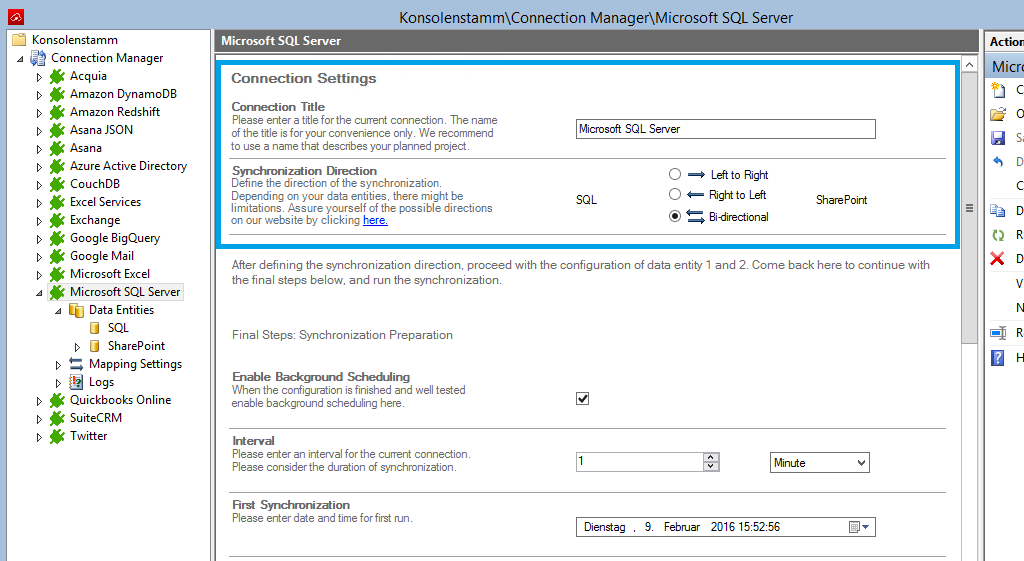
Configuring the Data Entity 1
We will now set up our Data Entities. Go to the data entity “Data Entity 1” to open the configuration settings.
Choose a Data Entity Title. It is recommended to give your entities meaningful names to maintain an overview when you decide to set up multiple connections.
Select the Data Provider for SQL Server from the data provider list. You can search for SQL Server by typing into the selection box.

You can copy the connection string below and adjust it to match your SQL server information. Use the Verify Connection String option to evaluate if the provided connection string is valid.
Data Source=mySQLServerName;Initial Catalog=mySQLDatabase;Trusted_Connection=True;
- "Trusted_Connection=True;" A trusted connection is the same as using Windows Authentication in SQL Server. Authentication is done by the domain, and authorization is handled by SQL Server.
The Select Statement text box is used to define specific data queries from our SQL table. In this case, we will be getting all records from our SQL table. Save your changes by using the right-hand pane option Save Changes.
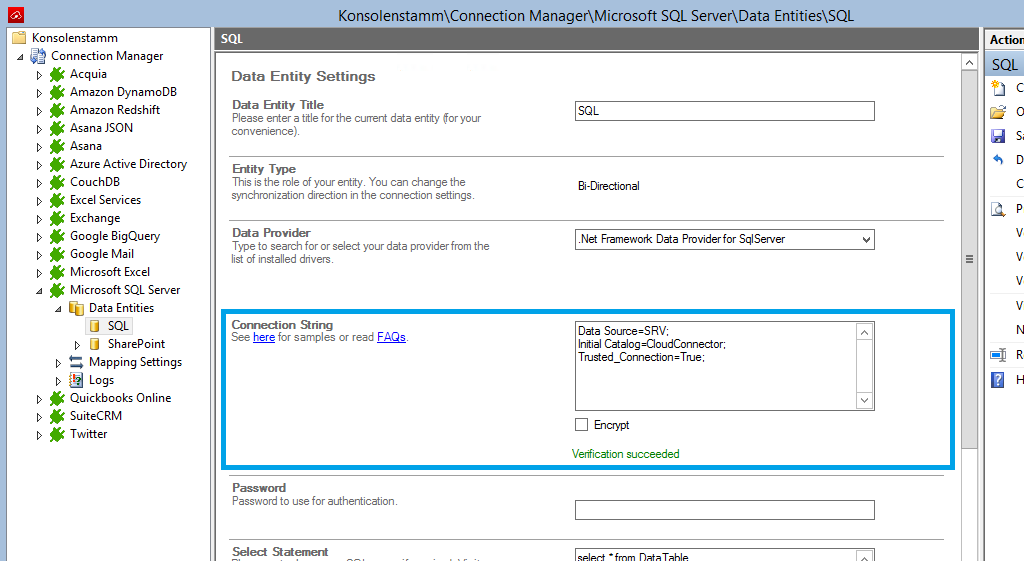
To check if all necessary columns are received, you can use the Preview Data option on the right-hand pane which will provide you with a pop-up window showing the records from your SQL Server table.
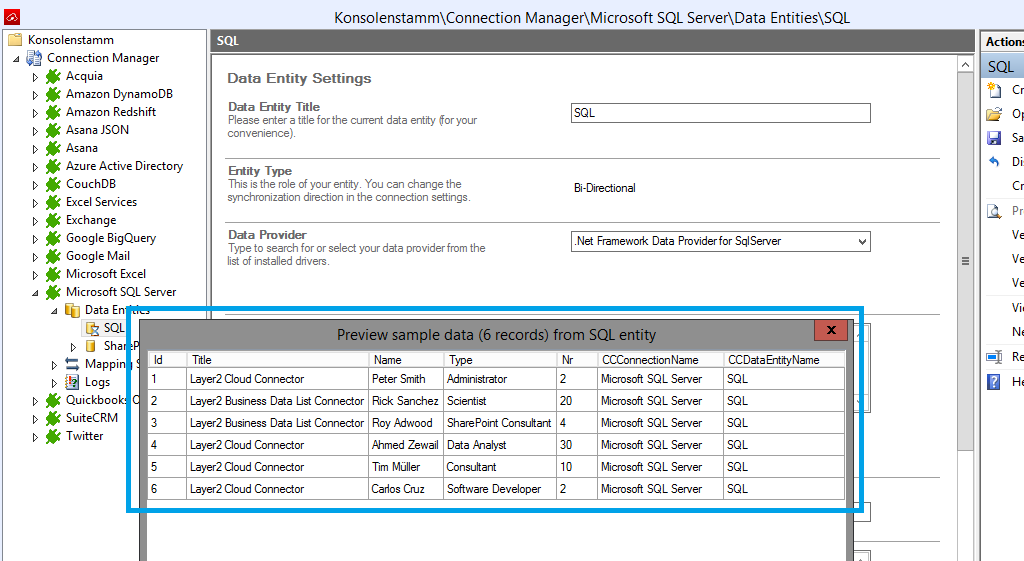
Configuring the Data Entity 2
We are going to send the data to a custom SharePoint Online List. It's required that you set up this list before the next steps. Your list should contain matching column types according to your source entity.
Use the left-hand pane to switch to the data entity "Data Entity 2". We will be using the Layer2 SharePoint Provider for this setup.
For more information about the SharePoint provider visit:
https://www.layer2solutions.com/support/cloud-connector-faqs/layer2-csom-sharepoint-ado-net-provider.
You can copy the below Connection String which contains the minimum of required properties to connect to your custom SharePoint Online List.
URL=https://your_sharepoint_list_url/Forms/AllItems.aspx;Authentication=Microsoft_Modern;
- "URL=https://your_sharepoint_list_url/Forms/AllItems.aspx;" this property defines the URL of your SharePoint list that will be addressed.
- "Authentication=Microsoft_Modern;" this property will determine the authentication method used. The Microsoft_Modern authentication method connects to your SharePoint Online tenant using the Microsoft ADAL auth method. This method will not work in the case of federation, e.g. ADFS. For further authentication methods you can consult the provider specifications linked above.
Click on Refresh Authentication Token, and enter your Office 365 User email and Password on the Microsoft authentication pop-up. Save your changes by using the right-hand pane option Save Changes.

In the next step, we will configure our mapping settings. Click on the Mappings option on the left-hand pane. If your fields from SharePoint are named identical to the fields from your source system, the Enable Auto Mapping option will match those columns. Disabling this option allows you to match your columns as needed. We enabled auto-mapping in our setup. Save your changes by using the right-hand pane option Save Changes.
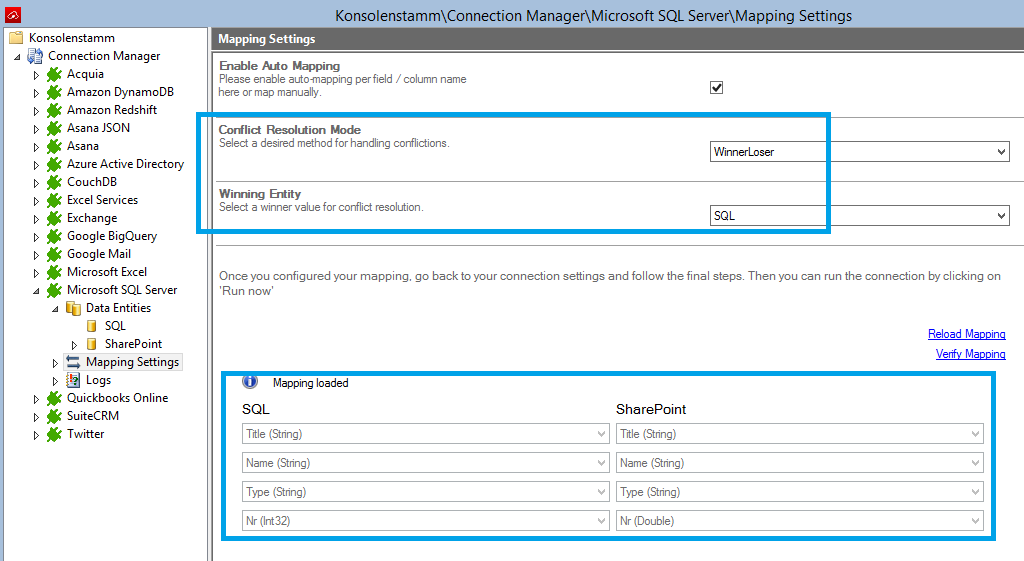
Running your connection
To run your connection switch back to the main connection configuration node and use the Run Now Button located at the bottom of the setup page. The Run Synchronization Toolbox will also display the synchronization process.

Below is a data preview of the records in our SQL table source entity:
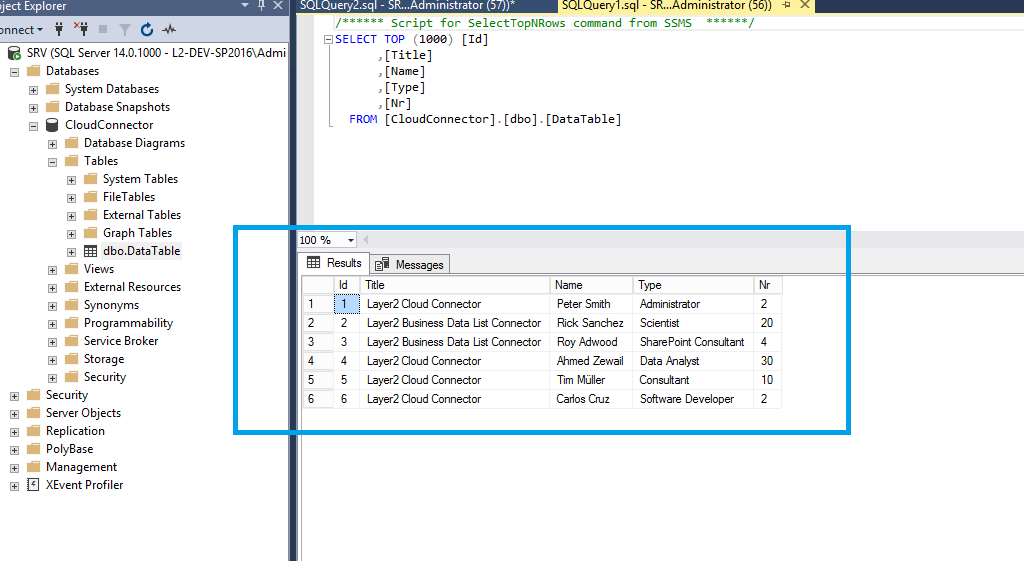
This will be the result in our SharePoint Online List after our initial successful synchronization:
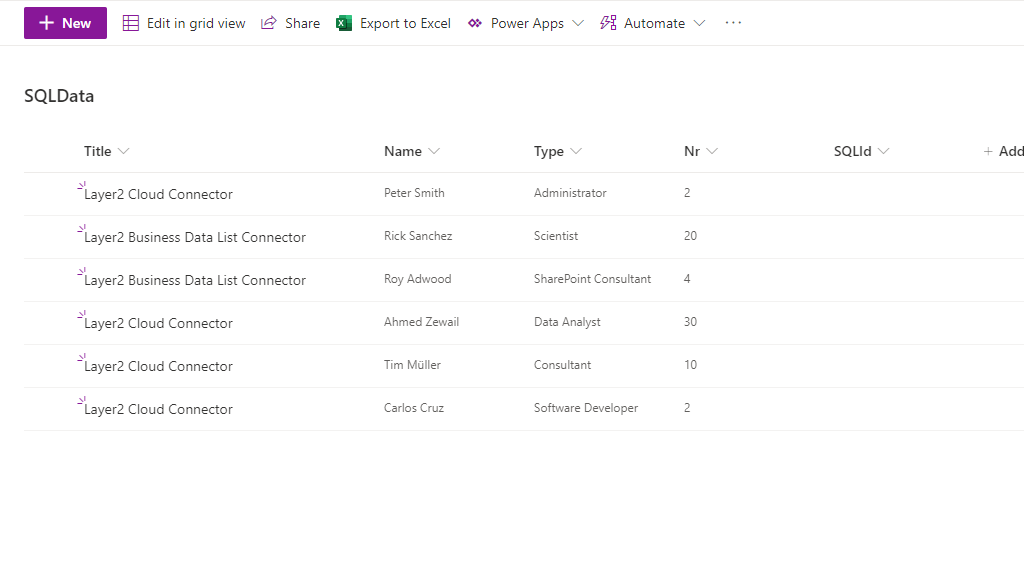
If you want to use a bi-directional synchronization, you can switch your connection direction after the initial synchronization is finished successfully. After adjusting the direction, you should check your Mappings settings again because some systems might include read-only columns that cannot be mapped directly.
We also recommend choosing a Conflict Resolution that matches your environments needs. You can find out more about the different conflict resolutions in our Layer2 Cloud Connector User Documentation.
Hints and known issues
Complex SharePoint fields like lookups, user or group picker etc. are generally supported. You have to make sure providing values that fit into the fields. If not possible, you can workaround by synchronizing text fields only and add your business logic using triggers and stored procedures (in SQL) or workflows (in SharePoint).
Connection Direction
This connection supports uni-directional as well as bi-directional synchronizations. Your query must be updatable for this (note that most joins are not). You also need to have write access rights to SQL for two-way synchronizations.

